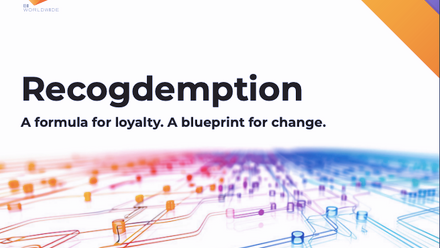Five ways to improve your reward and recognition scheme

As such, it’s important to look back at the reasons for implementing the reward and recognition scheme in the first place, and assess the extent to which it is currently meeting your strategic objectives. On top of this you should review the programme itself. What were the most popular rewards used? Which leaders or teams embraced the programme most effectivity? Were the same people consistently recognised throughout the year or was it a good spread?
1. Get stakeholder support
Once you have reviewed your programme and its goals, you can begin setting about improving it.
Everyone knows that January is a tough month to get back to work. To counter this, it is advisable to get stakeholders involved in the planning and evolution of the recognition programme.
Create a panel of employees from across the company to finesse the scheme. This should include those who were most recognised and rewarded last year, those who made the most nominations and those who did not get involved at all.
Use this panel to refine the existing scheme and develop rewards and ways to recognise that will get full buy-in across the company. Make sure this group is diverse, as different people are motivated and inspired by different things.
2. Know your workforce
A business is made up of many different job functions, type of people, ages and diverse groups. So how do you motivate everyone from a high achieving salesperson to a hard-working sales floor assistant? Both should be recognised equally for their effort, but the rewards may differ based on what will inspire them. For example, money-off vouchers for the high street are likely to be well received by one but not the other. Therefore, it is very important to understand the makeup of your organisation to ensure you have the right rewards.
Over the last few years we have talked at length about how Millennials have changed the dynamic of the workforce, but now we are entering the age of Generation Z. What is clear is that neither group is driven just by financial reward alone. They have their own values and goals, and want to be recognised as an individual rather than just another employee.
On the other hand, the older generation of Baby Boomers and Generation X may be more family driven with financial or time-sensitive responsibilities. Rewarding these groups is completely different from the previous two.
3. Give them choice
To address this diversity, ensure you offer a wide range of rewards as it helps with personalisation which, in turn, can be hugely beneficial to workplace engagement. For example, if you were to offer an employee with a family a family cinema pass, it can have the same positive impact as offering a young fashion-conscious singleton the same amount in high street vouchers. In addition, the employee may want to share their reward with colleagues, so offering a team lunch, dinner, treat could not only motivate the individual, but have far wider benefits.
4. Encourage recognition
As we mentioned earlier, a successful reward and recognition scheme is one that is fully embraced across the whole organisation. Therefore, a focus for the New Year should be to encourage company-wide use of the scheme. From our experience, we know that it can be hard to get all departments and employees bought in, so we encourage the businesses we work with to come up with a multi-channel communications plan. This could involve an internal email campaign, company intranet notice or even posters to generate awareness, alongside competitions and incentives to get people using the scheme.
We all know the theory that a happy team is a productive team. Managers should therefore be encouraged to regularly show their appreciation, and reward behaviours that are beneficial to company values or goals. They can have this built into their job description. It can be part of the objectives that make up their bonus.
Overall, it is vital to drive usage of the reward and recognition scheme from the top down and encourage uptake across the whole company.
5. Make it easy
Finally, make it as easy as possible for employees to recognise and reward one another. Remove the paperwork and administration and give team leaders the responsibility, budget and autonomy to drive usage of the scheme.
In addition, make the rewards easy to redeem, whether they be in the form of gift vouchers, scratch cards, days off, parking spaces for a month and so on. Whatever it is, the reward should have an immediate impact on the person or team receiving it. Something to excite and inspire them to want more.
By implementing these five approaches to reward and recognition, not only will you keep your scheme fresh, but you will also keep your staff engaged.
Employee recognition can help create a healthy company culture. Download our free e-book to find out more about how to build an effective recognition strategy.
Author is Jamie King, director of global reward at Xexec.
This article was provided by Xexec.
Supplied by REBA Associate Member, Xexec
Xexec is the UK's leading Reward and Recognition and Employee Benefits provider.







